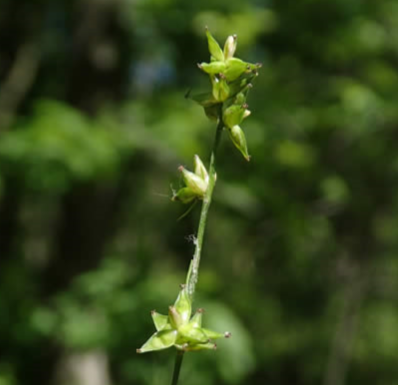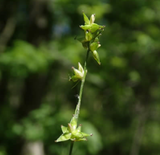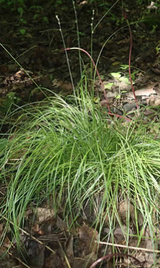- 2024 Native Trees
- >
- Grasses, Sedges, and Ferns
- >
- Rosy Sedge (Carex rosea)
Rosy Sedge (Carex rosea)
Height: 1 to 2 feet
Spread: 2 to 3 feet
Type: Native Grass
Sun: Part Shade to Full Shade
Bloom Time: Apil to May
Bloom Description: Yellow
Water: Dry to Wet
Suggested Use: Naturalize, Water Plant, Rain Garden
Attracts: Birds
Tolerate: Deer, Drought
Native to: Jefferson County
You don’t need pockets filled with posies if you have this great Rosy Sedge.
Easily identified by it distinctly curled stalks the evergreen Rosy Sedge brings great visible interest to the landscape. The edge flowers in the spring, and it has evergreen leaves with crisp edges.
In late spring green star-shaped flower spikes are displayed above the foliage of the Rosy Sedge. Almost looking like a star burst these seed heads will persist for a while and will be consumed by birds. This sedge occurs in shade to partly shaded woods in wet to dry soil .
The common name comes from the pinkish red stigmas of the species that are pronounced in the spring and early summer.
The plant spreads by rhizomes and can self seed creating an evergreen ground cover. The plant is highly disliked by deer and other herbivores. Additionally once established the Rosy Sedge is low maintenance and can tolerate a lot of abuse from the black thumbed gardener.
It is highly resistant to damage and browsing by deer. It is a good species for the wildlife minded as it provides year-round cover for wildlife and is a larval host plant to various butterflies and moths.■





